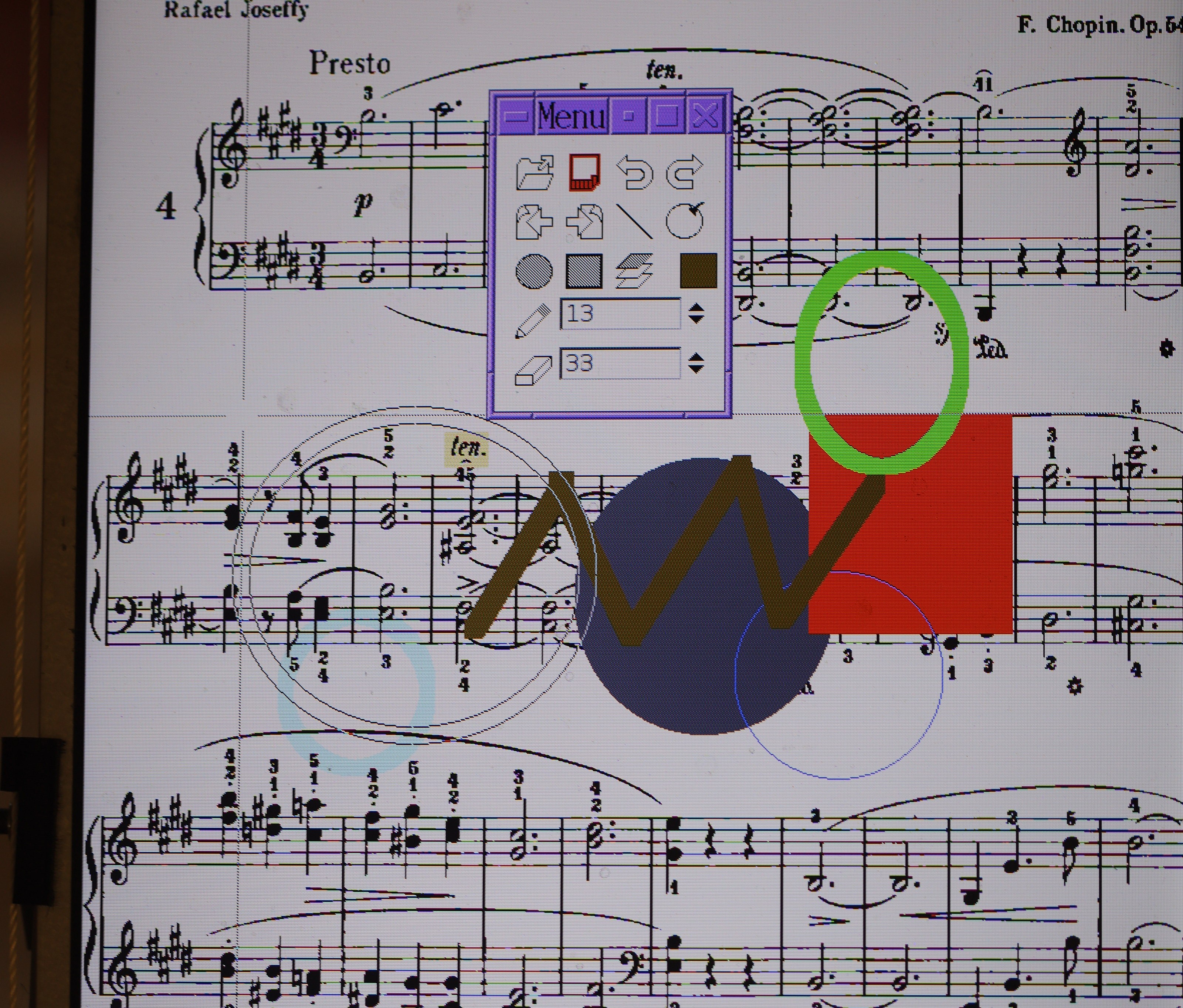

So the circular & hollow brushes proved useless & implementing XOR previews for a circular brush was more trouble than it was worth, so in keeping with minimalism, everything went back to a square brush. Lions seem to recall PC Paint just supporting square brushes. Helas, the hollow circles don't follow the contours of the XOR preview.
Circle, disc, box, & line tools arrived. Lions can appreciate why the Gimp doesn't have XOR previews of all the tools as PC Paint did. The fast XOR preview entails writing every tool twice, handling corner cases for showing & hiding the XOR previews, making sure the XOR preview matches what's drawn.
10 year old lions had no clue how to program an oval drawing routine & drawing ovals is still hard, in middle age. Even the mighty koala paint didn't have an oval drawing routine, only circles. The easiest way nowadays is to solve the pythagorean therum for every X to get Y on a circle, then scale the Y to get an oval. To speed it up, it's done with a floating point lookup table.
The result is the kind of blinking XOR cursors & line filled brush strokes that lions remember of PC Paint on an 8 Mhz Olivetti 24, but on all off 700Mhz. Maybe it would have been faster on the framebuffer or using SDL. The brush stroke routine is suboptimal in the limit. Brush stroke & hollow circle definitely need improvements. The XOR cursors are all Xorg routines drawing to the frame buffer.
Instead of a full screen clear button, it has a filled box tool with 1 of the colors being erase. That has greatly improved erasing to the point of almost completely replacing the erase tool.
The line, oval tools improved annotating but it's still manely a nightmare. The low resolution makes precision a lot more important, like it was in the days of 640x400. Either it needs a zoom function, a way to lock lines on the axes, or a way to selectively decelerate the pointer. A trackpad won't do the job if it's already hard with a mouse. Lions believe a trackpad with stylus could be the best pointing device.
 lion mclionhead
lion mclionhead
Discussions
Become a Hackaday.io Member
Create an account to leave a comment. Already have an account? Log In.